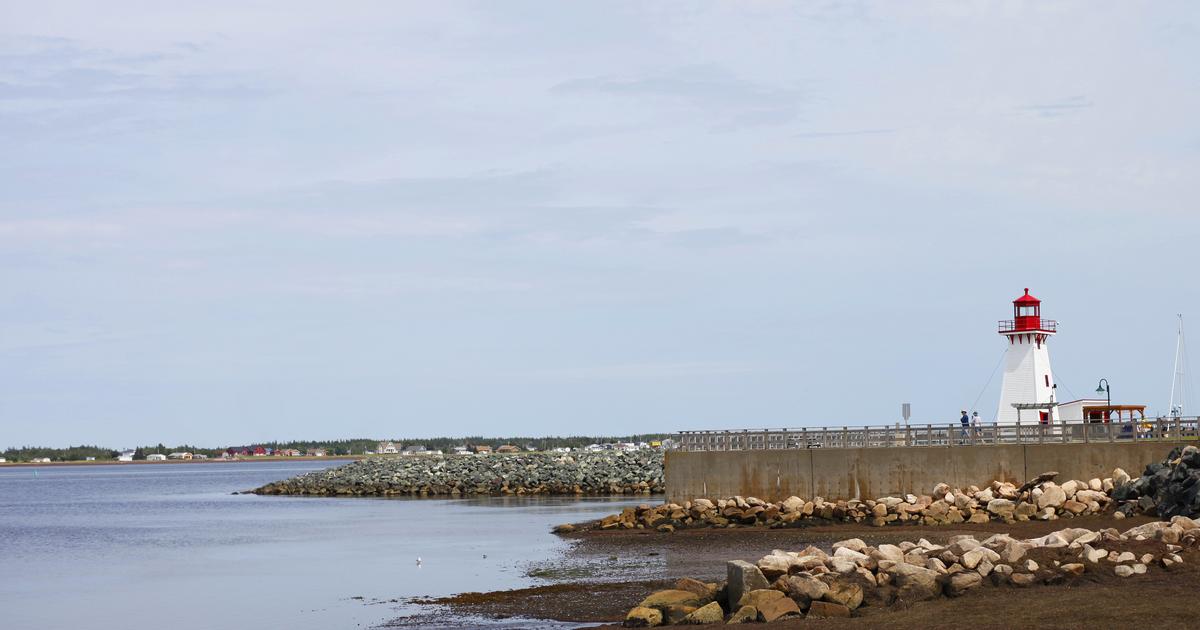This article is taken from the
special Figaro "From East to West - Living in Canada why not you?"
.
This number offers you to answer the questions you ask yourself as simply as possible.
This, with the help of practical texts, maps and testimonies from French people living in Canada.
Bathed in the waters of the Gulf of St. Lawrence, the Atlantic Ocean and the Bay of Fundy, the Atlantic provinces of Canada have many sites worthy of the most beautiful postcards.
Cape Breton Highlands National Park is one of Canada's most famous natural settings.
On the road of the Cabot Trail, we regularly shoot high-budget commercials, especially for luxury car brands.
As for the Bay of Fundy, which separates New Brunswick from Nova Scotia, it prides itself on holding the record for the highest tides in the world.
Four provinces between land and sea
Along the coasts alternate long strips of sand and rocky cliffs which are reminiscent of those of Ireland, Scotland or Brittany.
You can taste the same typically oceanic sweetness of life.
The omnipresence of water warms the climate there, the summers are cool and humid and the winters quite mild, although sometimes very snowy.
In total, the four provinces barely reach 2.5 million inhabitants for an area of 500,500 km2, almost that of France.
The vast majority of the population resides in cities that are mostly harbors or never very far from the ocean.
Read alsoCanada, the new destination of the American dream
The interior of the land, which is rather agricultural, contains vast expanses of forest.
In terms of urbanization, capitals are more like medium-sized cities than metropolises.
The largest, Halifax, Nova Scotia, still has 440,000 souls, but Charlottetown on Prince Edward Island only 39,000.
An economy in transition
Like Quebec, the Atlantic provinces are facing an aging population.
To counter this phenomenon, they rely on immigration and the return of some of the workers who left several years ago, especially in the western provinces of Canada.
These efforts seem to be bearing fruit since, since 2016, the populations have been increasing at a rapid rate with the exception of Newfoundland and Labrador.
The increased ability to work from home, a legacy of the pandemic, and lower housing costs than the rest of the country have also had their influence.
Read alsoQuebec: French will soon be recognized as the only official language by Canada
As for the economy, the Atlantic provinces have long suffered from the torpor that affected some of its regions where traditional industries had had their day.
A conversion was needed.
Today, the economy is still based on fishing and the exploitation of forests or other raw materials such as minerals or oil.
We are also witnessing a diversification oriented towards ICT, the environment, tourism, the aerospace industry or aquaculture.
However, health, education, transport and retail trade are still at the top of the priority sectors requiring labor from abroad.
Innovation and entrepreneurship are also strongly encouraged with a constant search for entrepreneurs to take over existing companies or create new ones.
Nova Scotia, the Lighthouse Route, Peggy's Cove.
PHILIPPE RENAULT
French-speaking islands in an English-speaking world
Although the two official languages of Canada are English and French, the Atlantic provinces are overwhelmingly English-speaking, with the exception of New Brunswick, the country's only officially bilingual province.
Among its 776,000 inhabitants, it has about a third of French speakers, the famous Acadians (see box).
According to Statistics Canada figures, in Newfoundland and Labrador only 4.6% of the population consider themselves capable of carrying on a conversation in French, 12.4% in Prince Edward Island and 10.4 % in Nova Scotia.
Before immigrating, make sure you have a good command of English or take courses.
In the private sphere and in a few well-defined regions or French-speaking villages, it is quite conceivable to live in French.
On the other hand, in the world of work,
Multiple roots and cultures
Whether they are descendants of Scots, Irish, English, Acadians or various nationalities arrived over the most recent waves of immigration, the inhabitants of Atlantic Canada are proud of their roots.
While the Acadians celebrate their national holiday on August 15 to the sounds of the Grand Tintamare, exiles from the Scottish Highlands organize their Highland Games.
During sunny days, dance and music festivals, games of strength and gatherings of clans pay homage to Celtic and Gaelic cultures.
Read alsoHappy like French expatriates in Quebec
A festive atmosphere found in pubs where you can listen to traditional music.
Many museums or reconstituted villages also come to recall the history of the populations.
This is the case of the historic Acadian village of Caraquet, the Pays de la Sagouine in Bouctouche or even Kings Landing, a reconstruction of a historic English-speaking village from the years 1780 to 1910. These three must-sees allow you to learn more about the various roots in the region to better integrate into society.
Another local pride, the inhabitants of these provinces with marine colors celebrate seafood products and mainly lobster, a true culinary icon.
In Shediac, on the Acadian coast of New Brunswick, a giant bronze statue has even been erected to the great marine crustacean...
Once upon a time in Acadia
Grand-Pré National Historic Site, Nova Scotia, is one of Acadia's premier landmarks RUSTYELLIOTT - KEN R MORRIS JR
They are mostly from what was then the French region of Poitou.
The Acadians, the first French settlers in North America, settled and prospered during the 17th century on lands that today belong to Nova Scotia.
A century later, France and England are fighting over the North American continent.
The Acadian territories are located between the two antagonistic colonies: New England to the south and New France to the north.
Read alsoWhat to see and do in Quebec?
Our ten essentials
In 1755, England decided to settle the fate of the Acadians once and for all and massively deported these peaceful farmers.
Families are separated, villages are destroyed, many die before reaching their destination.
Exiled or fugitives, around 10,000 totally destitute Acadians experienced a long period of wandering in search of a new land of welcome.
After the English victory in Canada in 1763, some colonies will be allowed to reform, mainly in New Brunswick.
Others take refuge in Louisiana and become the famous Cajuns.
Survivors of this dark period called it the “
Great Upheaval
”.
Every five years, since 1994, the World Acadian Congress, which takes place each time in a different region, aims to strengthen ties between the members of this numerous diaspora.
The next one will take place in 2024 (https://www.cma2024.ca).
Moncton: a certain sweetness of life
Downtown, Main Street and the Bell Aliant PHILIPPE RENAULT communications tower
The city does not look like a postcard, at home, nothing sparkling.
Behind this somewhat austere appearance, however, hides a lively city with its share of attractions, varied restaurants and a contagious good mood.
With nearly 160,000 inhabitants, Greater Moncton has consolidated its title of New Brunswick's largest urban agglomeration in recent years.
A population increase of which more than 50% is attributable to immigration.
Moncton has also experienced the fastest economic growth of any other major city in the Atlantic Provinces.
Read alsoWhen to go to Canada?
Weather, climate, activities… The best period by region
Business services (mainly call centres), but also the famous ICT, transport and logistics and tourism are among the sectors that create the most jobs.
As the “
natural
” increase in its aging population slows, to ensure a prosperous future the region will need to continue to attract and retain more young families and workers.
Bilingualism in the spotlight
Today, nearly a thousand new permanent residents settle in Greater Moncton each year out of a total of approximately 10,000 immigrants.
Of these, 6% speak both French and English, which represents a rate of bilingualism well above that of Canada as a whole (9%).
The city has everything to please European French speakers.
Over 70% of residents own their homes, with the most recent average cost being $306,500 (€220,000).
The region is very safe and offers a happy mix of nature and urban charm.
The large sandy beaches of the Acadian coast are only 25 minutes away by car and the water temperature there exceeds 25°C in summer, a unique fact in North America!
A triple city
Greater Moncton is primarily made up of three cities, Moncton, Dieppe and Riverview.
While Dieppe is predominantly French-speaking, in Riverview on the other side of the Petitcodiac River, English dominates.
As for Moncton, Francophones represent 35% of the population there.
The agglomeration prides itself on being a welcoming city that likes to share its good humor.
According to Sorribes de Wismes, a Frenchwoman newly established in Moncton: “
In one month here, I met more people than in one year in Montreal, for that I think it's
the place to be
”.
"From East to West - Living in Canada why not you?"
, €8.90, available at newsstands and on
the Figaro Store
.
From East to West - Living in Canada why not you?
Le Figaro








